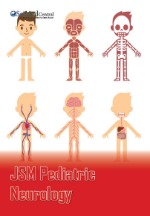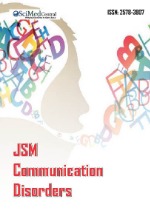Mental Health Interventions for Post-Disaster Trauma in Displaced Communities in Developing Countries
- 1. Department of Medical Social Work, Bayelsa Medical University, Nigeria
- 2. Department of Community Medicine, Bayelsa Medical University, Nigeria
Abstract
Mental health interventions for post-disaster trauma in displaced communities in developing countries are crucial for fostering resilience and recovery. This paper focuses on integrating mental health into disaster preparedness and response plans as a vital strategy for addressing the mental health needs of displaced populations. As the frequency of disasters and conflicts increases, particularly in resource-constrained regions, the mental health needs of displaced populations have become a significant concern. Crucial interventions include culturally sensitive approaches considering affected populations’ local social, cultural, and religious contexts. Community-based programs that involve local leaders, traditional healers, and culturally appropriate communication tools are essential in promoting mental well-being and addressing trauma. Further, empowering communities through participatory approaches and ongoing evaluation of interventions ensures their sustainability and effectiveness. Partnerships between governments, NGOs, and international agencies are vital to creating a cohesive, comprehensive response, leveraging mobile clinics and telehealth solutions to overcome geographical barriers and improve access to care. Finally, addressing mental health stigma, building local capacity, and ensuring continuous funding for mental health services are critical for long-term recovery. A collaborative and culturally informed approach, aligned with sustainable development goals, is necessary to address displaced communities’ complex mental health needs and foster resilience in the face of future challenges.
Keywords
Mental health interventions; Post-disaster trauma; Displaced communities; Developing countries; Cultural sensitivity; Disaster preparedness; Mental health stigma; Sustainable development
CITATION
Jack TJ, Izah SC (2024) Mental Health Interventions for Post-Disaster Trauma in Displaced Communities in Developing Countries. Ann Com- munity Med Pract 9(2): 1064.
INTRODUCTION
The rising frequency of natural disasters and conflicts, exacerbated by climate change and geopolitical instability, has become a critical concern for resource-constrained nations. These events not only lead to immediate physical destruction but also have profound long-term implications for mental health. The World Health Organization (WHO) has indicated that individuals exposed to major emergencies, such as natural disasters, are at a significantly higher risk of developing mental health disorders, including anxiety, depression, and post-traumatic stress disorder (PTSD) [1]. The increasing prevalence of such disasters is linked to climate change, which has intensified the severity and frequency of extreme weather events, thereby creating a cycle of vulnerability and trauma among affected populations [2,3]. Furthermore, geopolitical instability often leads to armed conflicts that displace communities, further compounding the mental health crises faced by these populations [4].
In resource-constrained nations, the limited mental health infrastructure significantly exacerbates the challenges faced in the aftermath of disasters. Many developing countries lack adequate mental health services, which are often overshadowed by the pressing need for physical health care following disasters [5,6]. For instance, a study in Nepal highlighted the challenges in developing a district mental health care plan, emphasizing the need for community-based mental health programs to address the unique needs of affected populations [7]. The WHO has noted that nearly half of low- to middle-income countries do not have established mental health policies, which hinders the development of necessary infrastructure and services [8]. This lack of resources and infrastructure not only limits immediate mental health support but also affects long-term recovery and resilience in the face of future disasters [9].
Displaced populations are particularly vulnerable to trauma due to the loss of homes, livelihoods, and loved ones. The psychological impact of displacement can be profound, leading to a range of mental health issues that require urgent attention [4]. Research indicates that the trauma experienced by these populations can lead to increased rates of mental disorders, which are often exacerbated by the stress of adjusting to new environments and the uncertainty of their future [1,10]. The loss of social support networks further compounds these issues, as individuals may find themselves isolated and without access to necessary mental health resources [11]. In many cases, the trauma associated with displacement is not adequately addressed in disaster response plans, leading to a cycle of neglect that can have devastating consequences for mental health [4].
Despite the critical importance of mental health in disaster response, it is often overlooked in planning and recovery efforts. Mental health considerations are frequently absent from national health and emergency preparedness plans, which can lead to inadequate support for affected populations [4,12]. The integration of mental health services into disaster response frameworks is essential for ensuring that individuals receive comprehensive care that addresses both physical and psychological needs [5]. The WHO has advocated for embedding mental health and psychosocial support in national health strategies, emphasizing the need for guidelines and standards to facilitate effective responses during emergencies [4]. This integration is crucial for fostering resilience and promoting recovery in communities affected by disasters.
The lack of mental health services in resource-constrained settings is further compounded by societal stigma surrounding mental health issues. In many cultures, mental health problems are often viewed as a sign of weakness, leading to reluctance in seeking help [11,6]. This stigma can prevent individuals from accessing the care they need, thereby exacerbating their mental health conditions. Moreover, the limited availability of trained mental health professionals in these regions means that even when individuals are willing to seek help, they may find it difficult to access appropriate services [9,13]. Efforts to decriminalize mental health issues and promote awareness are essential for reducing stigma and encouraging individuals to seek the support they need [14].
Community-based approaches to mental health care have shown promise in addressing the needs of populations affected by disasters. Engaging local communities in mental health initiatives can enhance the effectiveness of interventions and promote resilience [7,13]. For instance, community health workers can play a vital role in providing support and resources to individuals experiencing mental health challenges, particularly in areas where formal mental health services are lacking [11]. Additionally, initiatives that empower families and communities to take an active role in mental health care can help to reduce stigma and improve access to services [15]. The integration of mental health into primary health care systems is also crucial for ensuring that individuals receive comprehensive care that addresses both their physical and psychological needs [5,10].
This paper examines mental health interventions for post- disaster trauma in displaced communities within developing countries, emphasizing the prevalence of conditions like PTSD, depression, and anxiety. It highlights the importance of culturally sensitive approaches, multi-stakeholder collaboration, and capacity building in mental health services to address these challenges effectively. Furthermore, it links mental health recovery to broader sustainable development goals, advocating for its integration into disaster preparedness and resilience strategies.
Trauma Burden Post-Disaster with regard to Mental Health Interventions in Displaced Communities in Developing Countries
The prevalence of mental health disorders such as Post- Traumatic Stress Disorder (PTSD), depression, and anxiety is alarmingly high among displaced individuals in developing countries, particularly following disasters. Displacement often exacerbates existing vulnerabilities, leading to significant mental health challenges. For instance, studies have shown that displaced populations in regions like Bangladesh experience heightened levels of mental distress, with PTSD rates significantly increasing post-disaster [16]. Similarly, a study conducted in Vietnam after a typhoon revealed a marked rise in mental health issues, indicating that natural disasters can trigger or worsen pre-existing conditions [17]. The compounded vulnerabilities of children, women, and the elderly in these communities further amplify the mental health crisis, as these groups often face additional stressors such as loss of family members, economic instability, and social disintegration [18]. Table 1 shows the mental health challenges and interventions in displaced communities post- disaster.
The impact of trauma on long-term well-being, productivity, and social cohesion cannot be overstated. Displaced individuals often struggle with the psychological aftermath of their experiences, which can hinder their ability to reintegrate into society and regain a sense of normalcy. Research indicates that trauma can lead to chronic mental health issues that affect not only the individual but also their families and communities, thereby disrupting social cohesion and economic productivity [19]. For example, in Sierra Leone, high levels of depression and anxiety were reported among disaster victims, which subsequently affected their ability to participate in community rebuilding efforts [19]. This cycle of trauma and its repercussions underscores the urgent need for effective mental health interventions tailored to the unique contexts of displaced populations.
These communities ‘ barriers to seeking mental health care are multifaceted and deeply entrenched. The stigma surrounding mental health issues often prevents individuals from seeking help, as many fear social ostracism or discrimination [20]. Additionally, a lack of awareness about available mental health services further complicates the situation, as individuals may not know where to turn for help or may not recognize their symptoms as treatable conditions [21]. Limited access to care, particularly in rural or underserved areas, exacerbates these challenges. In many developing countries, mental health services are scarce, and those that do exist are often underfunded and inadequately staffed [9,22]. This combination of stigma, lack of awareness, and limited access creates significant barriers to effective mental health intervention.
In Africa, for instance, integrating mental health into primary health care has been identified as a crucial step towards improving access to care for displaced populations [23]. Uganda’s
experience reforming mental health policies to prioritize community-based care illustrates the potential for enhancing mental health service delivery in post-disaster contexts [23]. However, despite these efforts, many communities still face significant challenges in accessing appropriate mental health care, highlighting the need for continued advocacy and resource allocation to support these initiatives [24]. Similarly, in Asia, the mental health needs of displaced populations remain primarily unmet due to systemic barriers and cultural stigmas surrounding mental health treatment [21].
The role of culturally responsive interventions is vital in addressing the mental health needs of displaced communities. Interventions developed in collaboration with local populations are more effective as they are tailored to the community’s specific cultural and contextual needs [18]. For example, community-based mental health programs in Bangladesh have shown promise in supporting vulnerable populations affected by disasters [16]. These programs often utilize local healthcare providers familiar with the community’s cultural dynamics, increasing the likelihood of successful engagement and treatment adherence [25]. Furthermore, culturally sensitive approaches can help to mitigate stigma and promote greater acceptance of mental health services within the community.
The importance of addressing secondary trauma exposure is also critical in the context of post-disaster mental health interventions. Individuals who witness the suffering of others or are indirectly affected by disasters can experience significant psychological distress, which may manifest as PTSD or other mental health disorders [26]. This phenomenon is particularly relevant in densely populated areas where the effects of displacement are felt collectively, leading to a shared experience of trauma that necessitates community-wide interventions [26]. Tailoring mental health services to address both individual and collective trauma can enhance the effectiveness of interventions and foster resilience within displaced communities.
Long-term strategies for mental health interventions must focus on sustainability and capacity building within affected communities. Training local healthcare providers to deliver evidence-based mental health care is essential for creating a self-sustaining model of care that can adapt to the community’s evolving needs [25]. Programs that prioritize the development of local expertise improve access to care and empower communities to take ownership of their mental health needs [16]. Additionally, integrating mental health services into existing healthcare frameworks can facilitate a more comprehensive approach to healthcare delivery, ensuring that mental health is prioritized alongside physical health [23].
CULTURALLY SENSITIVE INTERVENTIONS
Culturally sensitive interventions in mental health are essential, particularly in displaced communities within developing countries. These interventions must be tailored to the affected populations’ unique cultural, social, and religious contexts to ensure their effectiveness. Understanding and integrating local cultural practices and beliefs into mental health interventions cannot be overstated. Research indicates that culturally competent care leads to better mental health outcomes, as it respects and acknowledges the diverse backgrounds of individuals seeking help [27,28]. For instance, in many African and Asian communities, traditional healing practices play a significant role in mental health care, and integrating these practices into formal mental health interventions can enhance acceptance and effectiveness [29,30]. Table 2 highlights the culturally sensitive mental health interventions in displaced communities.
Community-based psychosocial support programs that involve local leaders and traditional healers are particularly effective in fostering trust and engagement among displaced populations. Such programs leverage the existing social structures and cultural norms within communities, which can facilitate the delivery of mental health services [31,32]. For example, community mental health initiatives in Palestine have successfully incorporated local cultural concepts such as “Sumud,” which translates to steadfastness, into their resilience- building strategies [33]. This approach respects the local culture and empowers community members to take an active role in their mental health care, thereby enhancing the overall effectiveness of the interventions.
Using culturally appropriate communication tools, languages, and symbols is another critical aspect of culturally sensitive interventions. Effective communication is paramount in mental health care, as it ensures that individuals understand and feel comfortable engaging with the services [34,35]. In many displaced communities, language barriers can hinder access to mental health services. Therefore, employing local languages and culturally relevant symbols in educational materials and therapeutic practices can significantly improve engagement and understanding [36]. For instance, mental health programs in refugee camps across Africa that utilize local dialects and culturally resonant imagery have shown higher participation rates and improved mental health outcomes [37].
Integrating local coping mechanisms and resilience-building practices into intervention designs is vital for fostering sustainable mental health support in displaced communities. Many cultures possess unique resilience strategies developed over generations, which can be harnessed to support mental health interventions [38,39]. For example, storytelling and community gatherings are standard practices in many African cultures that can be utilized to promote mental well-being [40]. By incorporating these practices into formal mental health programs, practitioners can create a more relatable and compelling therapeutic environment that resonates with the community’s lived experiences [41].
In Asia, similar culturally sensitive approaches have been observed. In countries like Myanmar, where traditional beliefs about mental health are prevalent, integrating local healing practices with modern psychological interventions has proven beneficial [42]. Programs involving local shamans or healers in the treatment process enhance cultural acceptance and bridge the gap between traditional and modern mental health care [43]. This integration can lead to a more holistic approach to mental health, addressing both the psychological and spiritual needs of individuals in displaced communities.
Moreover, the COVID-19 pandemic has highlighted the importance of culturally sensitive mental health interventions. Migrant populations in Europe, for instance, have faced unique challenges during the pandemic, necessitating tailored mental health support that considers their specific cultural contexts [28]. The pandemic has exacerbated existing mental health issues among displaced individuals, making it imperative to develop interventions that are not only effective but also culturally relevant. Research suggests that culturally informed mental health services can mitigate the adverse effects of such crises by fostering resilience and community support [44].
The role of local leaders and community members in designing and implementing mental health interventions cannot be overlooked. Engaging these stakeholders ensures that the interventions are grounded in the community’s reality and are more likely to be accepted and sustained [45]. In many cases, local leaders can serve as advocates for mental health awareness, helping to destigmatize mental health issues and encourage individuals to seek help [46]. This community-driven approach has shown promise in various contexts, improving mental health outcomes and greater community cohesion [47].
Furthermore, evaluating culturally sensitive interventions is crucial for understanding their effectiveness and making necessary adjustments. Continuous feedback from community members can provide valuable insights into what works and what does not, allowing for the refinement of intervention strategies [48]. This iterative process enhances the quality of mental health services and empowers the community by involving them in the decision-making process [49]. Involving community members in evaluating mental health programs has been shown to increase their ownership and commitment to the interventions, leading to more sustainable outcomes [50].
GOVERNMENT AND NGO COLLABORATION
The collaboration between governments, non-governmental organizations (NGOs), and international agencies in addressing mental health interventions in displaced communities within developing countries is a multifaceted approach that has gained increasing recognition in recent years. This collaboration is particularly crucial in the context of mental health, as displaced communities often face unique challenges, including trauma, stigma, and limited access to healthcare services. Governments play a vital role in policy creation, funding allocation, and infrastructure development, while NGOs are instrumental in rapid response, community engagement, and program implementation. International agencies contribute by providing capacity building, technical expertise, and funding, creating a synergistic effect that enhances the overall effectiveness of mental health interventions in these vulnerable populations [51,52].
Governments are responsible for establishing mental health policies that align with international standards and local needs. In many developing countries, mental health policies are still in their infancy, with significant gaps in implementation and funding. For instance, the World Health Organization (WHO) has highlighted that nearly half of low- and middle-income countries lack comprehensive mental health policies [8]. This lack of policy framework often results in inadequate mental health services, particularly in rural and conflict-affected areas. However, successful collaborations have emerged, such as the partnership between the Institute of Psychiatry in London and the Russian Federal Government, which implemented a multifaceted intervention to strengthen mental health systems in urban and rural areas [51]. Such examples illustrate the potential for governments to leverage partnerships with NGOs and international organizations to enhance mental health service delivery.
NGOs are critical in rapidly implementing mental health interventions, particularly in crises where immediate support is needed. They often serve as the first responders in disaster- affected areas, providing essential services such as psychological first aid, counseling, and community-based support programs. For instance, in Kenya, the KIDS program was developed through a collaborative effort involving various stakeholders, including health providers and community leaders, to promote children’s mental well-being [53]. This model emphasizes the importance of community engagement and integrating mental health services into existing health frameworks. Moreover, NGOs often employ innovative approaches, such as task-shifting, where community health workers (CHWs) are trained to deliver mental health care, addressing the shortage of mental health professionals in these regions [54].
International agencies, such as the WHO and various United Nations bodies, play a vital role in capacity building and providing technical expertise to strengthen mental health systems in developing countries. These agencies often facilitate training programs for local healthcare providers and policymakers, ensuring that mental health interventions are culturally appropriate and effective. For example, the WHO’s Assessment Instrument for Mental Health Systems (WHO- AIMS) has been instrumental in gathering data on mental health services and guiding policy development in low-resource settings [8]. Additionally, international agencies often provide funding for mental health initiatives, enabling governments and NGOs to implement evidence-based interventions that address the specific needs of displaced populations [52].
Successful collaborations between governments, NGOs, and international agencies have led to innovative mental health interventions that have demonstrated effectiveness in various contexts. For instance, in South Africa, the IMAGE intervention combined microfinance with mental health support, significantly improving women’s empowerment and mental health outcomes [55]. Similarly, in India, community-based youth health interventions have shown positive effects on depression scores and suicidal behavior among adolescents [55]. These examples underscore the importance of integrating mental health interventions into broader development strategies, ensuring that mental health is prioritized alongside other health and social issues.
Mobile clinics and digital health technologies have emerged as practical tools for delivering mental health services in displaced communities. These approaches can overcome geographical barriers and provide timely support to needy individuals. For instance, telehealth solutions have been successfully implemented in Afghanistan, where community health workers utilize mobile applications to deliver mental health care in remote areas [54]. Such innovations enhance access to mental health services and reduce the stigma associated with seeking help, as individuals can receive support in a more private and convenient manner [56,57]. Integrating technology into mental health interventions represents a promising avenue for improving service delivery in resource-limited settings.
Community engagement is a cornerstone of adequate mental health interventions in displaced communities. Stakeholders must work collaboratively to develop culturally sensitive interventions tailored to the population’s specific needs. For example, in Kenya, the conceptualization of youth mental health involved a shared responsibility among various stakeholders, highlighting the importance of community involvement in mental health promotion [58]. This participatory approach not only fosters trust and acceptance of mental health services but also empowers communities to take ownership of their mental health and well-being.
The intersection of mental health and socio-economic factors compounds the challenges faced by displaced communities in developing countries. Poverty, social exclusion, and lack of access to education and employment opportunities can exacerbate mental health issues, creating a vicious cycle that is difficult to break [59]. Therefore, mental health interventions must be integrated into broader social and economic development strategies to address the root causes of mental health problems. For instance, interventions that promote social participation and community engagement have been shown to improve mental health outcomes among individuals with mental disorders [60]. By addressing the social determinants of mental health, stakeholders can create a more supportive environment for individuals in displaced communities.
CAPACITY BUILDING IN MENTAL HEALTH SERVICES
Capacity building in mental health services for displaced communities in developing countries is a multifaceted endeavor that requires a comprehensive approach to address the unique challenges faced by these populations. Displacement due to conflict, natural disasters, or economic instability often leads to significant mental health issues, necessitating targeted interventions. Training programs for health workers, social workers, and volunteers in trauma-informed care are essential in this context. Such training equips local personnel with the
skills to provide culturally sensitive and practical mental health support. For instance, in Sri Lanka, the prevalence of war- related mental health conditions has highlighted the need for community-based interventions that incorporate support from various social networks, including family and religious leaders [61]. This approach not only enhances the capacity of local health workers but also fosters a sense of community resilience, which is crucial in the aftermath of trauma [62].
The deployment of mobile mental health units is another effective strategy to reach remote and underserved populations. These units can provide immediate psychological support and facilitate access to mental health services in areas lacking traditional healthcare infrastructure. In Lebanon, for example, mobile units have been utilized to deliver mental health services to displaced populations affected by conflict, demonstrating this approach’s potential to bridge service delivery gaps [63]. Furthermore, mobile units can be instrumental in conducting outreach and education, raising awareness about mental health issues, and reducing the stigma associated with seeking help. This is particularly important in cultures where mental health problems are often misunderstood or stigmatized, as highlighted by the need for culturally appropriate interventions [18].
Telehealth solutions represent a promising avenue to overcome geographical barriers often hindering access to mental health services in developing countries. The COVID-19 pandemic has accelerated the adoption of telehealth, revealing its potential to provide mental health support to marginalized groups [64]. In Afghanistan, for instance, telehealth interventions have shown effectiveness in improving mental health outcomes, particularly for individuals who may not have access to traditional healthcare settings [54]. The flexibility and accessibility of telehealth can significantly enhance the reach of mental health services, allowing practitioners to connect with displaced individuals in remote areas. Additionally, studies indicate that telehealth can reduce indirect costs associated with healthcare access, such as travel expenses and time lost from work [65]. This is particularly beneficial for displaced populations who may already be facing economic hardships.
The creation of mental health curricula in medical and social work education systems is vital for ensuring that future health professionals are equipped to address the mental health needs of displaced communities. Integrating mental health training into
existing educational frameworks can foster a new generation of practitioners who are knowledgeable about mental health issues and culturally competent in their approach to care. For example, in Canada, mental health literacy programs have been shown to improve students’ understanding of mental health issues, which is a crucial step in promoting mental health awareness and reducing stigma [66]. By embedding mental health education into the curricula, educational institutions can play a crucial role in shaping the attitudes and skills of future healthcare providers, ultimately improving service delivery in displaced communities.
Advocacy for increased investment in mental health services as part of disaster resilience planning is essential for sustainable capacity building. Mental health is often overlooked in emergency response and recovery efforts despite its critical importance in promoting overall community resilience. Research indicates that integrating mental health considerations into disaster preparedness and response plans can significantly enhance the effectiveness of these initiatives [67]. For instance, in Nepal, community-based interventions that combined mental health support with disaster preparedness training demonstrated improvements in mental health outcomes and community cohesion [68]. By advocating for mental health to be included in disaster resilience frameworks, stakeholders can ensure that mental health services are prioritized and adequately funded, leading to more effective responses to crises.
In Africa and Asia, various examples illustrate the importance of capacity building in mental health services for displaced communities. In South Africa, community mental health workers have supported caregivers of individuals with mental health issues, highlighting the effectiveness of community-based approaches [69]. Similarly, community resilience has been linked to improved mental health outcomes among displaced populations in Colombia, underscoring the importance of collective action and support systems in recovery efforts [70]. These examples demonstrate that localized, community-driven interventions can effectively address the mental health needs of displaced individuals, fostering resilience and recovery.
Moreover, integrating mental health and psychosocial support (MHPSS) into broader health and social services is crucial for addressing the multifaceted needs of displaced populations. Interventions that combine mental health support with other social services, such as education and economic empowerment, can lead to more sustainable outcomes. For instance, in Haiti, community-based psychoeducational workshops have successfully integrated MHPSS content into interventions aimed at addressing intimate partner violence among displaced populations [71]. This holistic approach addresses immediate mental health needs and contributes to the overall well-being and stability of communities.
The role of community engagement in designing and implementing mental health interventions cannot be overstated. Engaging displaced communities in the development of mental health services ensures that interventions are culturally relevant and tailored to the population’s specific needs. A systematic review of psychosocial interventions with refugees from Asia emphasizes the importance of community involvement in creating effective mental health services [72]. By fostering a participatory approach, stakeholders can enhance the relevance and acceptability of mental health interventions, ultimately leading to better outcomes for displaced individuals.
IMPLICATIONS FOR SUSTAINABLE DEVELOPMENT
The implications for sustainable development concerning mental health interventions in displaced communities in developing countries are profound and multifaceted. The Sustainable Development Goals (SDGs), particularly SDG 3 (Good Health and Well-being) and SDG 16 (Peace, Justice, and Strong Institutions), provide a framework for understanding the critical role of mental health in achieving broader developmental objectives. Mental health is increasingly recognized as a fundamental component of overall health, and addressing it is essential for fostering resilience in communities affected by displacement. For instance, mental health interventions can significantly reduce the burden of mental illnesses among displaced populations, thereby contributing to the overall health and well-being of these communities [62,73]. Furthermore, including mental health targets in the SDGs is crucial for ensuring that individuals with mental health conditions receive equitable support and resources, which can facilitate their reintegration into society and promote social stability [73].
The role of mental health interventions extends beyond individual well-being; they are instrumental in fostering community resilience and social reintegration. Research indicates that collective resilience, which involves displaced communities’ shared experiences and coping mechanisms, can mitigate the psychological impacts of trauma and adversity [62]. For example, community-based mental health programs have effectively enhanced social cohesion and collective coping strategies among displaced populations [74]. Such interventions address individual mental health needs and empower communities to collectively navigate the challenges posed by displacement, reinforcing social bonds and promoting a sense of belonging [75]. This collective approach aligns with the principles of SDG 16, which emphasizes the importance of peaceful and inclusive societies for sustainable development.
Economic considerations also underscore the importance of mental health interventions in displaced communities. Early intervention in mental health can lead to significant economic benefits, including reduced healthcare costs and improved workforce productivity. Studies have shown that addressing mental health issues promptly can decrease the long-term financial burden on healthcare systems and enhance the economic contributions of individuals within displaced communities [76]. For instance, mental health programs that focus on resilience- building have been associated with increased productivity and reduced worker absenteeism, thereby contributing to local economies [43]. Governments and organizations can foster economic stability and growth in communities adversely affected by displacement by investing in mental health interventions.
Moreover, mental health interventions can serve as a catalyst for social change and empowerment within displaced communities. By promoting mental health awareness and providing access to psychological support, these interventions can challenge the stigma associated with mental illness and encourage individuals to seek help [30]. In many developing countries, cultural beliefs and social norms can hinder individuals from accessing mental health services, leading to a cycle of neglect and worsening mental health outcomes [77]. Therefore, culturally sensitive mental health programs that engage community members in dialogue and education are essential for dismantling these barriers and fostering a supportive environment for mental health recovery [36].
Integrating mental health interventions into broader development strategies is crucial for achieving the SDGs. Programs that combine mental health support with education, vocational training, and social services can create a holistic approach to community development [30]. In contexts where displaced populations face multiple challenges, such as poverty, lack of education, and social exclusion, a comprehensive approach that addresses mental health alongside other developmental needs is vital for promoting sustainable outcomes [78]. This integrated strategy enhances individual well-being, strengthens community resilience, and fosters long-term development.
Furthermore, the impact of mental health interventions on youth in displaced communities cannot be overstated. Adolescents and young adults are particularly vulnerable to the psychological effects of displacement, and targeted mental health programs can play a crucial role in their development and prospects [79]. School-based mental health initiatives, for example, have improved resilience and academic performance among displaced youth, thereby contributing to their overall well-being and integration into society [35]. By prioritizing mental health in educational settings, communities can empower the next generation to thrive despite the challenges posed by displacement [80].
CONCLUSION
Integrating mental health into disaster preparedness and response plans is crucial for enhancing community resilience and ensuring a comprehensive approach to emergencies. Prioritizing mental health within national disaster risk reduction strategies helps address the psychological needs of affected populations, ensuring that mental health considerations are embedded in public health systems and emergency protocols. A collaborative approach involving the public and private sectors is essential for securing sustainable funding and support for mental health initiatives. Furthermore, empowering communities through participatory methods allows for creating culturally tailored interventions that reflect the unique needs of local populations, enhancing the relevance and effectiveness of mental health services. Continuous evaluation and adaptation of these interventions are necessary to ensure they remain effective and scalable in the long term.
Addressing the mental health needs of displaced populations in developing countries requires overcoming significant challenges, such as inadequate mental health infrastructure and the complex impact of climate change and geopolitical instability. The high prevalence of mental health issues in these communities underscores the need for culturally sensitive, community-based interventions that integrate local coping mechanisms and involve traditional healers when appropriate. Collaboration between governments, NGOs, and international agencies plays a key role in developing effective and sustainable mental health services. Building local capacity through training, mobile units, and telehealth solutions further improves access to mental health care in underserved areas. We can foster long-term recovery, resilience, and sustainable development in displaced communities by embedding mental health services within broader health and social frameworks.
REFERENCES
- Rodriguez-Rodriguez G, Roman-Perez M, Rodriguez-Flores F, Inostroza-Nieves Y. Suicidality after Natural Disasters. 2023.
- Ghazali DA, Guericolas M, Thys F, Sarasin F, Arcos Gonzalez P, Casalino E. Climate change impacts on disaster and emergency medicine focusing on mitigation disruptive effects: an international perspective. Int J Environ Res Public Health. 2018; 15: 1379.
- Berry HL, Bowen K, Kjellström T. Climate change and mental health: a causal pathways framework. Int J Public Health. 2010; 55: 123-132.
- Ommeren MV, Hanna F, Weissbecker I, Ventevogel P. Mental health and psychosocial support in humanitarian emergencies. East Mediterr Health J. 2015; 21: 498-502.
- Olofsson S, Sebastian MS, Jegannathan B. Mental health in primary health care in a rural district of Cambodia: a situational analysis. Int J Mental Health Syst. 2018; 12: 7.
- Burns JK. Mental health services funding and development in KwaZulu-Natal: a tale of inequity and neglect. S Afr Med J. 2010; 100: 662-666.
- Luitel NP, Jordans MJ, Adhikari A, Upadhaya N, Hanlon C, Lund C, et al. Mental health care in Nepal: current situation and challenges for development of a district mental health care plan. Confl Health. 2015; 9: 3.
- Hamid H, Abanilla K, Bauta B, Huang KY. Evaluating the WHO Assessment Instrument for Mental Health Systems by comparing mental health policies in four countries. Bull World Health Organ. 2008; 86: 467-473.
- Docrat S, Besada D, Cleary S, Daviaud E, Lund C. Mental health system costs, resources and constraints in South Africa: a national survey. Health Policy Plan. 2019; 34: 706-719.
- Joseph J, Sankar D, Nambiar D. The burden of mental health illnesses in kerala: a secondary analysis of reported data from 2002 to 2018. BMC Public Health. 2021; 21: 2264.
- Fisher JR, Cabral de Mello M. Using the World Health Organization’s 4S-framework to strengthen national strategies, policies and services to address mental health problems in adolescents in resource- constrained settings. Int J Mental Health Syst. 2011; 5: 23.
- Reifels L. Reducing the future risk of trauma: on the integration of global disaster policy within specific health domains and established fields of practice. Int J Environ Res Public Health. 2018; 15: 1932.
- Kohrt BA, Asher L, Bhardwaj A, Fazel M, Jordans MJ, Mutamba BB, et al. The role of communities in mental health care in low-and middle- income countries: a meta-review of components and competencies. Int J Environ Res Public Health. 2018; 15: 1279.
- Bitta MA, Kariuki SM, Chengo E, Newton CR. An overview of mental health care system in Kilifi, Kenya: results from an initial assessment using the World Health Organization’s Assessment Instrument for Mental Health Systems. Int J Mental Health Syst. 2017; 11: 1-11.
- Patel V, Flisher AJ, Nikapota A, Malhotra S. Promoting child and adolescent mental health in low and middle income countries. J Child Psychol Psychiatry. 2008; 49: 313-334.
- Nahar N, Blomstedt Y, Wu B, Kandarina I, Trisnantoro L, Kinsman J. Increasing the provision of mental health care for vulnerable, disaster-affected people in Bangladesh. BMC Public Health. 2014; 14: 1-9.
- Amstadter AB, Acierno R, Richardson LK, Kilpatrick DG, Gros DF, Gaboury MT, et al. Posttyphoon prevalence of posttraumatic stress disorder, major depressive disorder, panic disorder, and generalized anxiety disorder in a Vietnamese sample. J Traumatic Stress. 2009; 22: 180-188.
- Cohen F. Cultural idioms of distress among displaced populations: A scoping review. Int J Soc Psychiatry. 2023; 69: 5-13.
- Thompson-Assan S, Ayebea Aguadze G, Kakraba Kaitoo D. Integrated first-level psychosocial response to disasters in low-and middle- income countries. Counsel Psychother Res. 2024; 24: 390-395.
- Gee CB, Khera GS, Poblete AT, Kim B, Buchwach SY. Barriers to mental health service use in Asian American and European American college students. Asian Am J Psychol. 2020; 11: 98.
- Jang Y, Yoon H, Park NS, Rhee MK, Chiriboga DA. Mental health service use and perceived unmet needs for mental health care in Asian Americans. Community Ment Health J. 2019; 55: 241-248.
- Docrat S, Lund C, Chisholm D. Sustainable financing options for mental health care in South Africa: findings from a situation analysis and key informant interviews. Int J Ment Health Syst. 2019; 13: 1-11.
- Kigozi F. Integrating mental health into primary health care-uganda’s experience. Afr J Psychiatry. 2007; 10.
- Hanlon C, Wondimagegn D, Alem A. Lessons learned in developing community mental health care in Africa. World Psychiatry. 2010; 9: 185-189.
- Kutcher S, Chehil S, Roberts T. An integrated program to train local health care providers to meet post-disaster mental health needs. Rev Panam Salud Pública. 2005; 18: 338-345.
- Kessler RC, McLaughlin KA, Koenen KC, Petukhova M, Hill ED. The importance of secondary trauma exposure for post-disaster mental disorder. Epidemiol Psychiatr Sci. 2012; 21: 35-45.
- Hansen A, McGarry D, Johnson A, Roche MA. The impact of an undergraduate students’ culture on their learning about mental health: a scoping review. Nurs Health Sci. 2021; 23: 352-361.
- Alarcão V, Virgolino A, Stefanovska-Petkovska M, Neves J. Exploring the effects of the COVID-19 pandemic on mental health and well- being of migrant populations in Europe: an equity-focused scoping review. Behav Sci. 2022; 12: 393.
- Forbes S, Fikretoglu D. Building resilience: the conceptual basis and research evidence for resilience training programs. Rev Gen Psychol. 2018; 22: 452-468.
- Edward KL. Resilience: A Protector from depression. J Am Psychiatr Nurs Assoc. 2005; 11: 241-243.
- Foster K, Roche M, Delgado C, Cuzzillo C, Giandinoto JA, Furness T. Resilience and mental health nursing: an integrative review of international literature. Int J Ment Health Nurs. 2019; 28: 71-85.
- Gartland D, Riggs E, Muyeen S, Giallo R, Afifi TO, MacMillan H, et al. What factors are associated with resilient outcomes in children exposed to social adversity? A systematic review. BMJ Open. 2019; 9: e024870.
- Marie M, Hannigan B, Jones A. Mental health needs and services in the West Bank, Palestine. Int J Ment Health Syst. 2016; 10: 23.
- Herrman H, Stewart DE, Diaz-Granados N, Berger EL, Jackson B, Yuen T. What is resilience?. Can J Psychiatry. 2011; 56: 258-265.
- Logan-Greene P, Green S, Nurius PS, Longhi D. Distinct contributions of adverse childhood experiences and resilience resources: A cohort analysis of adult physical and mental health. So Work Health Care. 2014; 53: 776-797.
- Fung K, Liu JJ, Vahabi M, Li ATW, Zurowski M, Wong JPH. Pandemic Acceptance and Commitment to Empowerment Response (PACER) training: protocol for the development and rapid-response deployment. JMIR Res Protoc. 2021; 10: e33495.
- Tuck D, Berger E, Wile J, Patlamazoglou L. Single-factor interventions to promote resilience in tertiary education students: A systematic review. Int J Stress Manag. 2022; 29: 17.
- Gao T, Ding X, Chai J, Zhang Z, Zhang H, Kong Y, et al. The influence of resilience on mental health: The role of general well-being. Int J Nurs Pract. 2017; 23: e12535.
- Lima F, Shepherd C, Wong J, O’Donnell M, Marriott R. Trends in mental health related contacts among mothers of Aboriginal children in Western Australia (1990-2013): a linked data population-based cohort study of over 40 000 children. BMJ Open. 2019; 9: e027733.
- Lee JA, Heberlein E, Pyle E, Caughlan T, Rahaman D, Sabin M, et al. Study protocol for a school-based single group pragmatic trial to promote resilience in youth: Building resilience for Healthy Kids. Contemp Clin Trials Commun. 2021; 21: 100721.
- Ali K, Farrer L, Gulliver A, Griffiths KM. Online peer-to-peer support for young people with mental health problems: a systematic review. JMIR Ment Health. 2015; 2: e19.
- Murphy JM, Abel MR, Hoover S, Jellinek M, Fazel M. Scope, scale, and dose of the world’s largest school-based mental health programs. Harv Rev Psychiatry. 2017; 25: 218-228.
- Ramamurthy C, Zuo P, Armstrong G, Andriessen K. The impact of storytelling on building resilience in children: A systematic review. J Psychiatr Ment Health Nurs. 2024; 31: 525-542.
- Las Hayas C, Izco-Basurko I, Fullaondo A, Gabrielli S, Zwiefka A, Hjemdal O, et al. UPRIGHT, a resilience-based intervention to promote mental well-being in schools: study rationale and methodology for a European randomized controlled trial. BMC Public Health. 2019; 19: 1413.
- Foster K, Evans A, Alexander L. Grace under pressure: mental health nurses’ stories of resilience in practice. Int J Ment Health Nurs. 2023; 32: 866-874.
- Dray J. Child and adolescent mental health and resilience-focussed interventions: a conceptual analysis to inform future research. International J Environ Res Public Health. 2021; 18: 7315.
- Jones N, Whelan C, Harden L, Macfarlane A, Burdett H, Greenberg N. Resilience-based intervention for uk military recruits: a randomised controlled trial. Occup Environ Med. 2019; 76: 90-96.
- Alyoubi A, Halstead EJ, Zambelli Z, Dimitriou D. The impact of the COVID-19 pandemic on students’ mental health and sleep in Saudi Arabia. Int J Environ Res Public Health. 2021; 18: 9344.
- Liu SR, Kia-Keating M, Nylund-Gibson K, Barnett ML. Co-occurring youth profiles of adverse childhood experiences and protective factors: Associations with health, resilience, and racial disparities. Ame J Community Psychol. 2020; 65: 173-186.
- Fritz J, De Graaff AM, Caisley H, van Harmelen AL, Wilkinson PO. A systematic review of amenable resilience factors that moderate and/ or mediate the relationship between childhood adversity and mental health in young people. Front Psychiatry. 2018; 9: 230.
- Keynejad R, Semrau M, Toynbee M, Evans-Lacko S, Lund C, Gureje O, et al. Building the capacity of policy-makers and planners to strengthen mental health systems in low-and middle-income countries: a systematic review. BMC Health Serv Res. 2016; 16: 601.
- Semrau M, Alem A, Abdulmalik J, Docrat S, Evans-Lacko S, Gureje O, et al. Developing capacity-building activities for mental health system strengthening in low-and middle-income countries for service users and caregivers, service planners, and researchers. Epidemiol Psychiatr Sci. 2018; 27: 11-21.
- Mutiso VN, Musyimi CW, Musau AM, Nandoya ES, Mckenzie K, Ndetei DM. Pilot towards developing a school mental health service: Experiences and lessons learnt in implementing Kenya integrated intervention model for dialogue and screening to promote children’s mental well-being. Early Interv Psychiatry. 2018; 12: 972-978.
- Khoja S, Scott R, Husyin N, Durrani H, Arif M, Faqiri F, et al. Impact of simple conventional and Telehealth solutions on improving mental health in Afghanistan. J Telemed Telecare. 2016; 22: 495-498.
- Barry MM, Clarke AM, Jenkins R, Patel V. A systematic review of the effectiveness of mental health promotion interventions for young people in low and middle income countries. BMC Public Health. 2013; 13: 835.
- Naslund JA, Aschbrenner KA, Araya R, Marsch LA, Unützer J, Patel V, et al. Digital technology for treating and preventing mental disorders in low-income and middle-income countries: a narrative review of the literature. The Lancet Psychiatry. 2017; 4: 486-500.
- Arjadi R, Nauta MH, Chowdhary N, Bockting CLH. A systematic review of online interventions for mental health in low and middle income countries: a neglected field. Glob Ment Health (Camb). 2015; 2: e12.
- Tamburrino I, Getanda E, O’Reilly M, Vostanis P. “Everybody’s responsibility”: Conceptualization of youth mental health in Kenya. J Child Health Care. 2020; 24: 5-18.
- Fjellfeldt M. Developing mental health policy in Sweden: a policy analysis exploring how a complex societal challenge was consigned to individual citizens to solve. Nord Soc Work Res. 2023; 13: 4-20.
- Webber M, Fendt-Newlin M. A review of social participation interventions for people with mental health problems. Soc Psychiatry Psychiatr Epidemiol. 2017; 52: 369-380.
- Husain F, Anderson M, Cardozo BL, Becknell K, Blanton C, Araki D, et al. Prevalence of war-related mental health conditions and association with displacement status in postwar Jaffna District, Sri Lanka. JAMA. 2011; 306: 522-531.
- Siriwardhana C, Ali SS, Roberts B, Stewart R. A systematic review of resilience and mental health outcomes of conflict-driven adult forced migrants. Confl Health. 2014; 8: 13.
- Nuwayhid I, Zurayk H, Yamout R, Cortas CS. Summer 2006 war on Lebanon: A lesson in community resilience. Glob Public Health. 2011; 6: 505-519.
- Snoswell CL, Arnautovska U, Haydon HM, Siskind D, Smith AC. Increase in telemental health services on the Medicare Benefits Schedule after the start of the coronavirus pandemic: data from 2019 to 2021. Aust Health Rev. 2022; 46: 544-549.
- Imlach F, McKinlay E, Middleton L, Kennedy J, Pledger M, Russell L, et al. Telehealth consultations in general practice during a pandemic lockdown: survey and interviews on patient experiences and preferences. BMC Fam Pract. 2020; 21: 269.
- Mcluckie A, Kutcher S, Wei Y, Weaver C. Sustained improvements in students’ mental health literacy with use of a mental health curriculum in Canadian schools. BMC Psychiatry. 2014; 14: 379.
- James LE, Welton-Mitchell C, Noel JR, James AS. Integrating mental health and disaster preparedness in intervention: a randomized controlled trial with earthquake and flood-affected communities in Haiti. Psychol Med. 2020; 50: 342-352.
- Welton-Mitchell C, James LE, Khanal SN, James AS. An integrated approach to mental health and disaster preparedness: a cluster comparison with earthquake affected communities in Nepal. BMC Psychiatry. 2018; 18: 296.
- Monnapula-Mazabane P, Petersen I. Feasibility and acceptability of a mental health stigma intervention for low-income South African caregivers: A qualitative investigation. S Afr J Psychiatr. 2022; 28: 1824.
- Burgess RA, Fonseca L. Re-thinking recovery in post-conflict settings: Supporting the mental well-being of communities in Colombia. Glob Public Health. 2020; 15: 200-219.
- James LE, Welton-Mitchell C, Michael S, Santoadi F, Shakirah S, Hussin H, et al. Development and testing of a community-based intervention to address intimate partner violence among Rohingya and Syrian refugees: a social norms-based mental health-integrated approach. Int J Environ Res Public Health. 2021; 18: 11674.
- McGarity-Palmer R, Saw A, Keys CB. Community engagement in psychosocial interventions with refugees from Asia: A systematic review. Asian Am J Psychol. 2023; 14: 117.
- Minas H, Tsutsumi A, Izutsu T, Goetzke K, Thornicroft G. Comprehensive SDG goal and targets for non-communicable diseases and mental health. Int J Ment Health Syst. 2015; 9: 12.
- Mels C, Derluyn I, Broekaert E, Rosseel Y. The psychological impact of forced displacement and related risk factors on Eastern Congolese adolescents affected by war. J Child Psychol Psychiatry. 2010; 51: 1096-1104.
- Schoch-Spana M, Gill K, Hosangadi D, Slemp C, Burhans R, Zeis J, et al. The COPEWELL rubric: A self-assessment toolkit to strengthen community resilience to disasters. Int J Environ Res Public Health. 2019; 16: 2372.
- Hayes KN, Rossetti KG, Zlomke K. Community support, family resilience and mental health among caregivers of youth with autism spectrum disorder. Child Care Health Dev. 2023; 49: 130-136.
- Okuyama J, Funakoshi S, Tomita H, Yamaguchi T, Matsuoka H. Longitudinal characteristics of resilience among adolescents: a high school student cohort study to assess the psychological impact of the Great East Japan Earthquake. Psychiatry Clin Neurosci. 2018; 72: 821-835.
- De Silva MJ. Impact evaluations of mental health programmes: the missing piece in global mental health. J Epidemiol Community Health. 2015; 69: 405-407.
- Pharr JR, Chien LC, Gakh M, Flatt JD, Kittle K, Terry E. Moderating effect of community and individual resilience on structural stigma and suicidal ideation among sexual and gender minority adults in the United States. Int J Environ Res Public Health. 2022; 19: 14526.
- Davis E, Narayan A. Pregnancy as a period of risk, adaptation, and resilience for mothers and infants. Dev Psychopathol. 2020; 32: 1625-1639.








































































































































